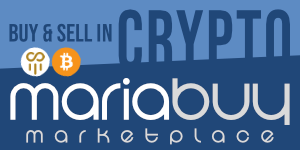Acorn Newsbot
Junior Member
- Joined
- Jan 28, 2006
- Posts
- 22,606
- Reaction score
- 126
In 2012, ICANN opened up an application window for new generic top level domains (gTLDs), offering those interested with three different options: a ‘geo’ TLD (such as .london), a branded TLD (such as .Gucci) or a generic TLD (such as .spa).
The creation of these new gTLDs facilitated new business opportunities across the domain name industry to provide support and registry services to those who secured them. One of the men riding this wave is Nick Wood, Managing Director and Co-founder of Com Laude. Nick has worked for many years at the cutting edge of rights protection in domain names. He co-founded Com Laude with Lorna Gradden to help companies build and defend their brands online with domain name management and online brand protection.
We caught up with Nick to find out how Com Laude operates, what the appeal of .brands has been, and how they are being used by the brands who own them.

Hi Nick, can you give us some background on your involvement with the new gTLD programme.
Com Laude is our brand protection registrar and we realised, back in 2008 when the ICANN board was announcing expansion of the gTLD scheme, that owning a string at the root of the internet could be a very valuable and interesting asset, particularly for a brand.
In the end, we managed 120 applications for new gTLDs when the first application window opened in 2012, many of which were for .brands. Today, we work with those applicants who secured their .brands to help them stay compliant with ICANN as they launch and operate their TLDs.
Can you summarise the three different new gTLD categories for us? Who would they all appeal to?
The .brand TLDs are unique and appeal to brands for the promise of control, helping them to protect their IP, and as a platform for innovation. Geo TLDs attract geographic applicants, such as .Amsterdam or .Brussels (two we worked with), seeking a TLD that local people, businesses and organisations can instinctively identify with. Generic TLDs, such as .app or .web, are designed to introduce choice to internet users and generally allow anyone to register anything.
What was the appeal for an organisation to secure their own .brand?
Many of them recognised how a .brand offered them an opportunity to reshape their online ecosystem, to find new ways of marketing, and to develop and improve customer engagement, data management and security. They also saw that a .brand could function well as a domain name shortener for use on social media and in advertising. The element of control was a lure: a .brand is a walled garden, with an entrance that the organisation solely controls. In addition to the autonomy, the .brand also helps to protect IP and brand values.
How do your clients measure the success of their new .brands?
Traditionally, the success of a domain was measured by domains under management (DUM), in this case how many domains are registered under the .brand, but it’s a very blunt tool. We find that our clients use a variety of metrics to achieve a more accurate measurement of success that is based on their industry and their use of the domain. For example, one of the world’s largest banks highly values the fact that there is no phishing under its .brand; a media company is using its .brand to support a global intranet used by over 60,000 staff members every day; while a pharmaceutical client runs critical internal databases under its gTLD. If you used DUM as a metric of success, all of these .brands would score low, but they are all very happy with the performance of their .brand. I feel that a better way of determining success would be to evaluate the trust that new gTLD engenders: signposting or supporting authentic content online is increasingly important to a brand and their consumer nowadays.
What are the most innovative uses of .brands you have seen so far?
The range of uses of .brands we see is vast and includes developing deep content redirects (app.google), building micro sites to promote new products or services (pro.sony), or supporting navigation (home.komatsu) or regional business interests (ie.abbott). We have also seen .brands being used for social media (twitter.audi) and recruitment (join.erni), as well as customer service (support.sky) or retail (shop.mango).
One of our favourite examples is our client Gucci. If you buy something gorgeous from the Gucci website, you visit gucci.com, but any after sales engagement is done via .gucci. This gives a sense of exclusivity, but is also a quick way to flag authenticity – only Gucci can register a .gucci. Interestingly, the swift assimilation of the .brand demonstrated that consumers actually adapted to a new gTLD quicker than much of the industry assumed they would. That should encourage more brands to use theirs. Another interesting example I must mention from the generic TLD category is .law. This is a restricted, open registry, which means that anyone applying for a .law domain – such as NickWood.law – must prove they a qualified lawyer. These domains are now being seen as a badge of authenticity for lawyers internationally; a simple but powerful way of proving credentials online.
……
During the window for new gTLD applications in 2012, 664 brand applications were submitted, representing 34% of all 1,930 applications made. Read more about how brands are using their domains for marketing in this blog, or find out more about Nominet’s registry services and domain solutions. For those interested in applying for their own new gTLD, the details and date of the second round of applications has yet to be announced by ICANN but it is expected to be in 2021.
The post A .brand is a walled garden online appeared first on Nominet.
Continue reading...
The creation of these new gTLDs facilitated new business opportunities across the domain name industry to provide support and registry services to those who secured them. One of the men riding this wave is Nick Wood, Managing Director and Co-founder of Com Laude. Nick has worked for many years at the cutting edge of rights protection in domain names. He co-founded Com Laude with Lorna Gradden to help companies build and defend their brands online with domain name management and online brand protection.
We caught up with Nick to find out how Com Laude operates, what the appeal of .brands has been, and how they are being used by the brands who own them.

Hi Nick, can you give us some background on your involvement with the new gTLD programme.
Com Laude is our brand protection registrar and we realised, back in 2008 when the ICANN board was announcing expansion of the gTLD scheme, that owning a string at the root of the internet could be a very valuable and interesting asset, particularly for a brand.
In the end, we managed 120 applications for new gTLDs when the first application window opened in 2012, many of which were for .brands. Today, we work with those applicants who secured their .brands to help them stay compliant with ICANN as they launch and operate their TLDs.
Can you summarise the three different new gTLD categories for us? Who would they all appeal to?
The .brand TLDs are unique and appeal to brands for the promise of control, helping them to protect their IP, and as a platform for innovation. Geo TLDs attract geographic applicants, such as .Amsterdam or .Brussels (two we worked with), seeking a TLD that local people, businesses and organisations can instinctively identify with. Generic TLDs, such as .app or .web, are designed to introduce choice to internet users and generally allow anyone to register anything.
What was the appeal for an organisation to secure their own .brand?
Many of them recognised how a .brand offered them an opportunity to reshape their online ecosystem, to find new ways of marketing, and to develop and improve customer engagement, data management and security. They also saw that a .brand could function well as a domain name shortener for use on social media and in advertising. The element of control was a lure: a .brand is a walled garden, with an entrance that the organisation solely controls. In addition to the autonomy, the .brand also helps to protect IP and brand values.
How do your clients measure the success of their new .brands?
Traditionally, the success of a domain was measured by domains under management (DUM), in this case how many domains are registered under the .brand, but it’s a very blunt tool. We find that our clients use a variety of metrics to achieve a more accurate measurement of success that is based on their industry and their use of the domain. For example, one of the world’s largest banks highly values the fact that there is no phishing under its .brand; a media company is using its .brand to support a global intranet used by over 60,000 staff members every day; while a pharmaceutical client runs critical internal databases under its gTLD. If you used DUM as a metric of success, all of these .brands would score low, but they are all very happy with the performance of their .brand. I feel that a better way of determining success would be to evaluate the trust that new gTLD engenders: signposting or supporting authentic content online is increasingly important to a brand and their consumer nowadays.
What are the most innovative uses of .brands you have seen so far?
The range of uses of .brands we see is vast and includes developing deep content redirects (app.google), building micro sites to promote new products or services (pro.sony), or supporting navigation (home.komatsu) or regional business interests (ie.abbott). We have also seen .brands being used for social media (twitter.audi) and recruitment (join.erni), as well as customer service (support.sky) or retail (shop.mango).
One of our favourite examples is our client Gucci. If you buy something gorgeous from the Gucci website, you visit gucci.com, but any after sales engagement is done via .gucci. This gives a sense of exclusivity, but is also a quick way to flag authenticity – only Gucci can register a .gucci. Interestingly, the swift assimilation of the .brand demonstrated that consumers actually adapted to a new gTLD quicker than much of the industry assumed they would. That should encourage more brands to use theirs. Another interesting example I must mention from the generic TLD category is .law. This is a restricted, open registry, which means that anyone applying for a .law domain – such as NickWood.law – must prove they a qualified lawyer. These domains are now being seen as a badge of authenticity for lawyers internationally; a simple but powerful way of proving credentials online.
……
During the window for new gTLD applications in 2012, 664 brand applications were submitted, representing 34% of all 1,930 applications made. Read more about how brands are using their domains for marketing in this blog, or find out more about Nominet’s registry services and domain solutions. For those interested in applying for their own new gTLD, the details and date of the second round of applications has yet to be announced by ICANN but it is expected to be in 2021.
The post A .brand is a walled garden online appeared first on Nominet.
Continue reading...


















